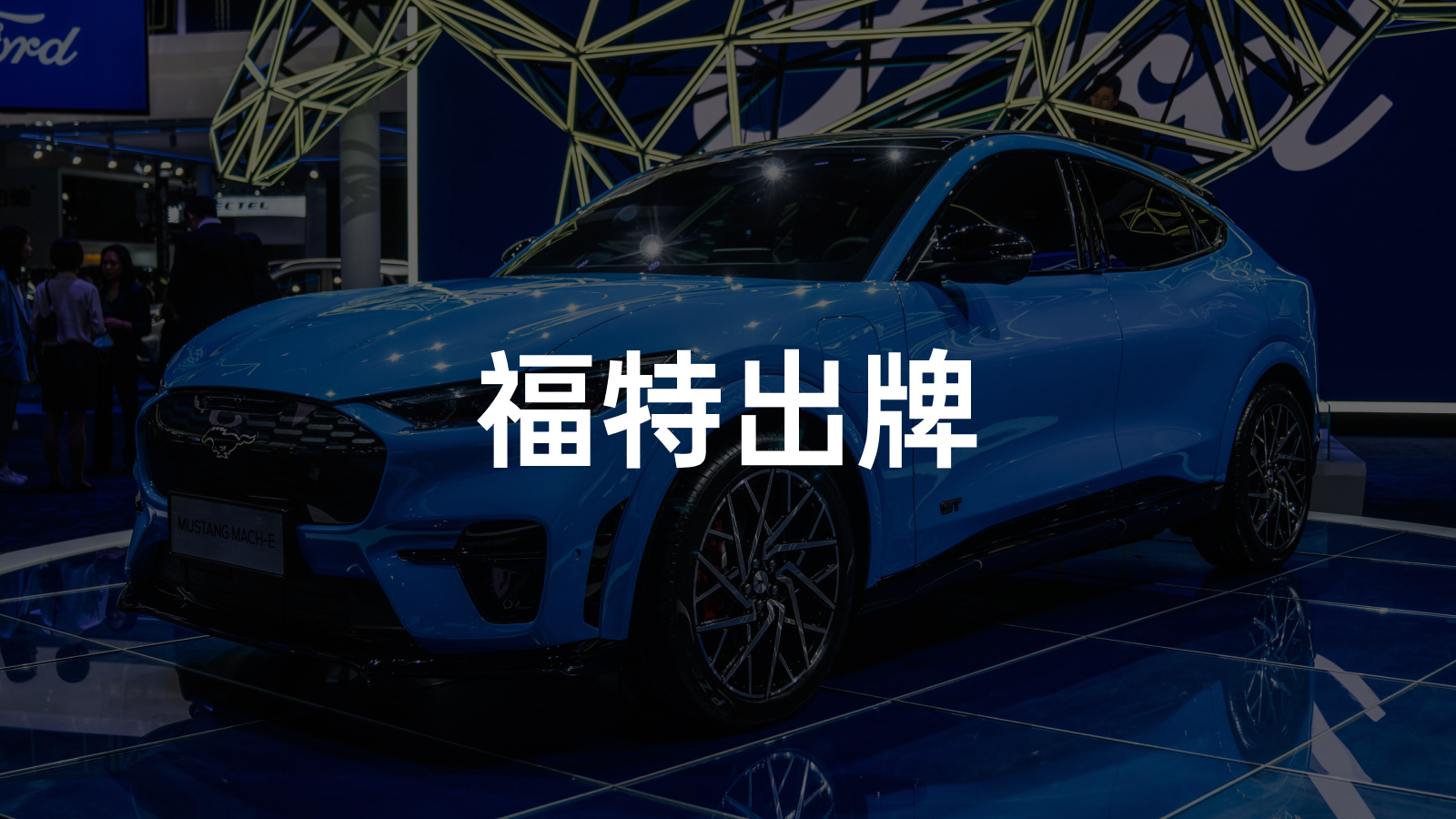![]()
On the day Musk smashed the Cybertruck window glass, I believe most people laughed until their stomach hurt at the scene of the accident. But then the snowflake-like orders poured in online, and I believe that at this point, Ford’s smile slowly froze. The subsequent tug-of-war match between Cybertruck and F150 was publicly held to challenge the craftsmen in Detroit. Here I must say a little bit of “young people lack sportsmanship.”
Because the last person who challenged Ford this way was Enzo Ferrari, and the outcome was that after 3 years of being challenged by Ford, in 1966, the GT40 finally won the “duel” at Le Mans by taking the top three spots.
Anyway, back to the topic, there have been a few mysterious Chinese engineering test car spy photos circulating on the internet lately, which diligent netizens have compared and identified as the newly released Ford electric SUV product, the Mustang Mach-E, which is now being delivered in North America and Europe. The spy photos of this pure electric product, which has recently begun deliveries, have now surfaced in China, which means that Ford’s “response” has come. But will the Ford GT40-like turnaround battle be repeated in the age of electrification?
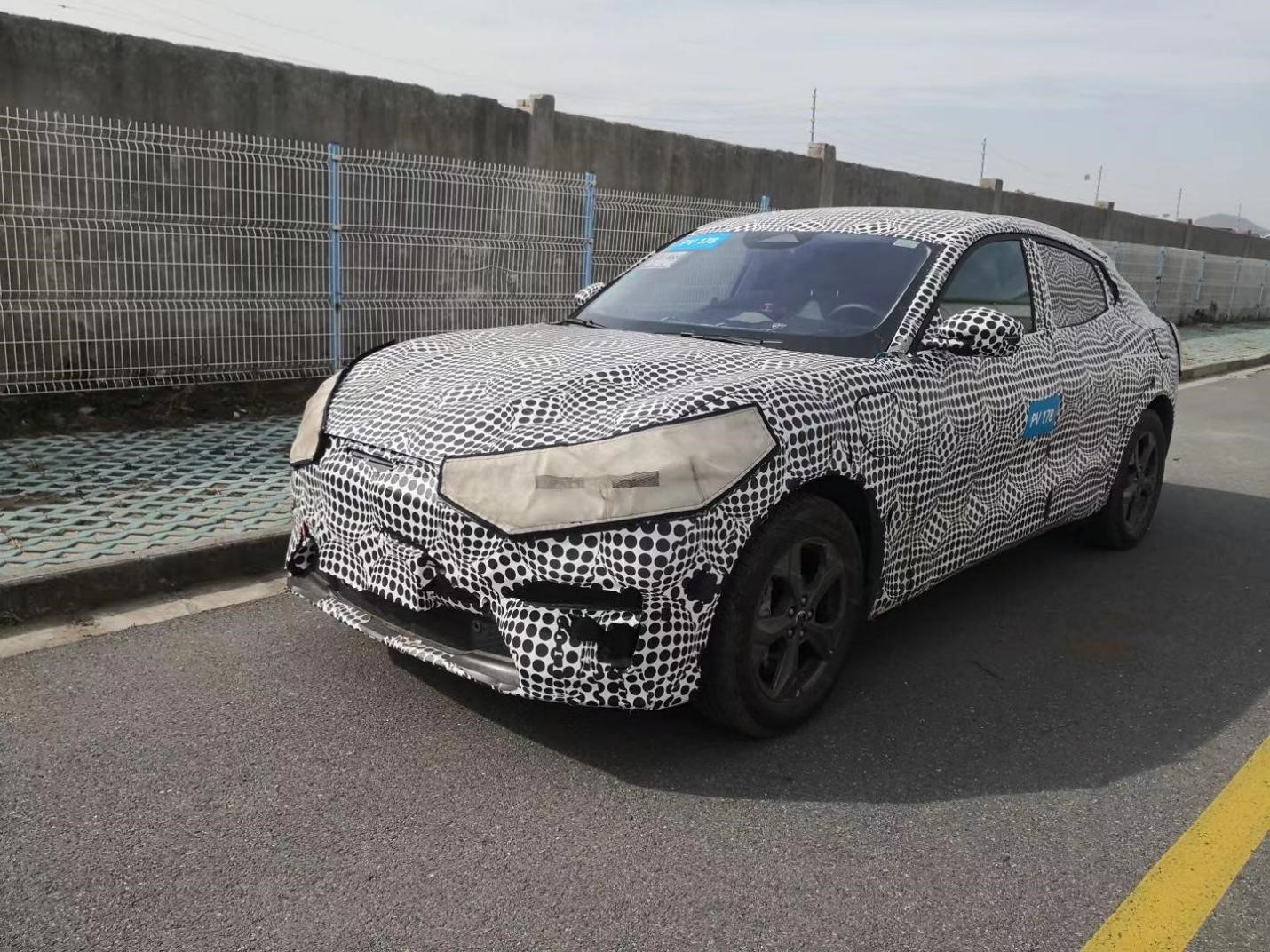
What can we see from these spy photos?
The suspected Chinese-made Mustang Mach-E engineering test car that was captured this time has two details on its appearance that are different from the overseas version:
First, the front grille detail partially exposed in the camouflage wrapping is different from the regular version already released in overseas markets, and is consistent with the front grille of the overseas GT version, confirming the news that the entire lineup will use the overseas GT front grille.
Second, the design on the front and rear fenders on the left side of the car has been changed to include a charging port at each end, and this change is presumably to move one of the ways to charge the vehicle (AC or DC) to the rear of the vehicle, to accommodate the Chinese market’s habit of backing into parking spaces, and to move the commonly used charging port to the rear.
At the same time, two differences can be seen in the interior details that were captured:
First, the center console interface is different from the overseas version, and the interface style is closer to SYNC+ which has been verified in several Ford models in the Chinese market.
Second, the design on the center armrest area is also different, and unlike the layered and hollow design of the overseas version, this engineering test car has a continuous central channel design in front of the cup holder, and a cover plate design can be faintly seen.
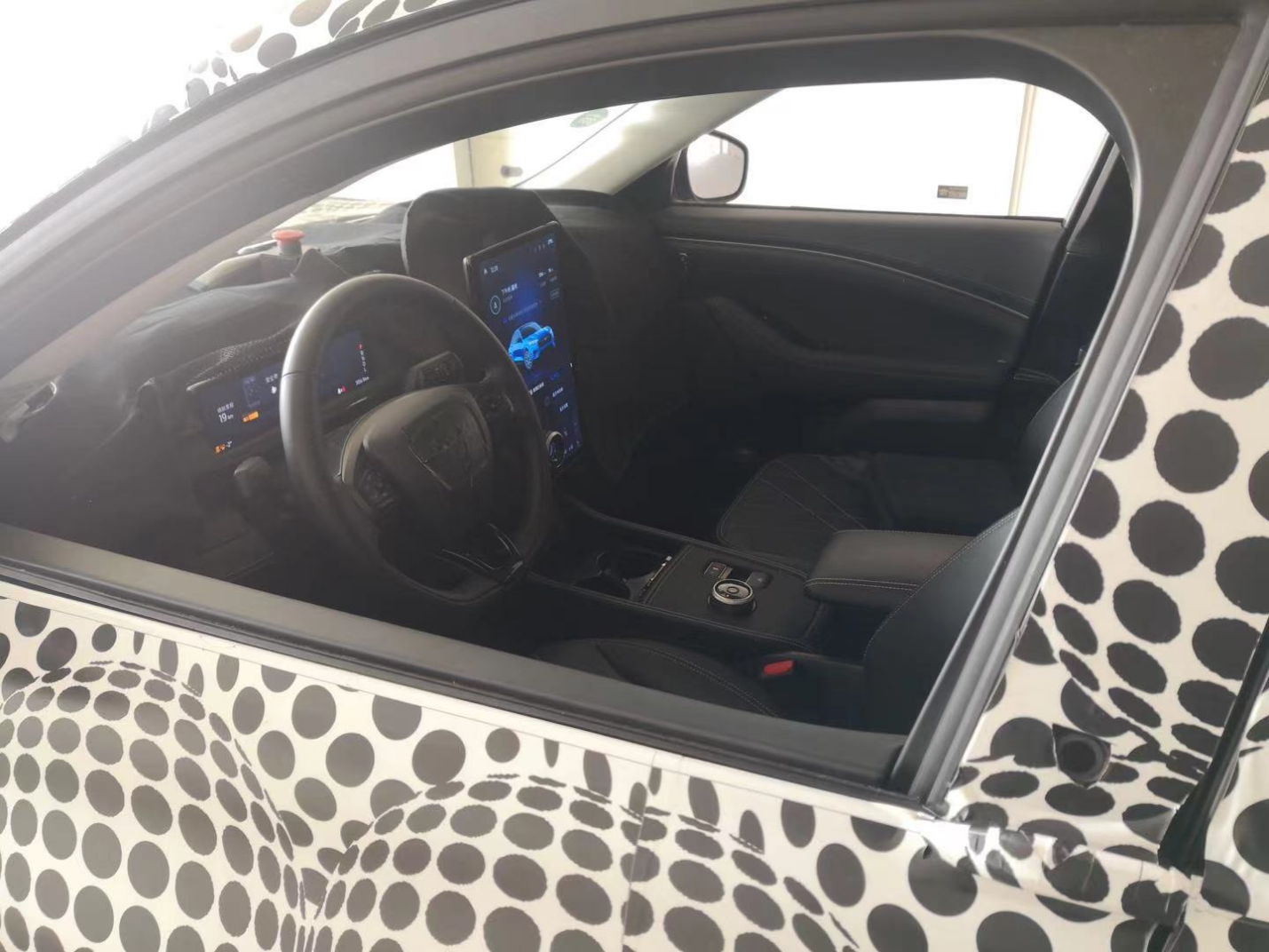
On this Mustang Mach-E engineering test car wrapped in camouflage, we can still see Ford’s localization changes to meet the needs of the Chinese consumer market.## Who is Mustang Mach-E for?
After reading the beginning, you can probably guess who the Ford Mustang Mach-E is for. As the saying goes, “It’s not about the bread, it’s about the bragging rights.” This is the prelude to the hot-blooded people of Detroit gambling with the name of Mustang to challenge Tesla after being mocked.
Recently, Darren Palmer, the head of Ford’s electric car business, also mocked Tesla in an interview with a certain media outlet.
A comment from an investor at JPMorgan Chase & Co. after test driving the Mach-E might be more rational: “Although we do not expect Ford to match Tesla’s sales of pure electric vehicles, we do expect investors to take this company’s competitiveness in this field seriously.”

We made a comparison table of the versions currently available in the North American market and Tesla’s Model Y in the North American market. We can see that on versions with similar prices, the hardware indicators such as range and acceleration performance are already very close. In fact, the long-range version of the Mustang Mach-E is the only non-Tesla electric car in the past period that has run more than 300 miles under the harsh conditions of EPA cycling.
But returning to the exterior design of the Mustang Mach-E, my first impression was a bit conservative. Compared to other Mustang models, it lacks many wild elements, but fortunately, the sense of strength and muscle has not disappeared.
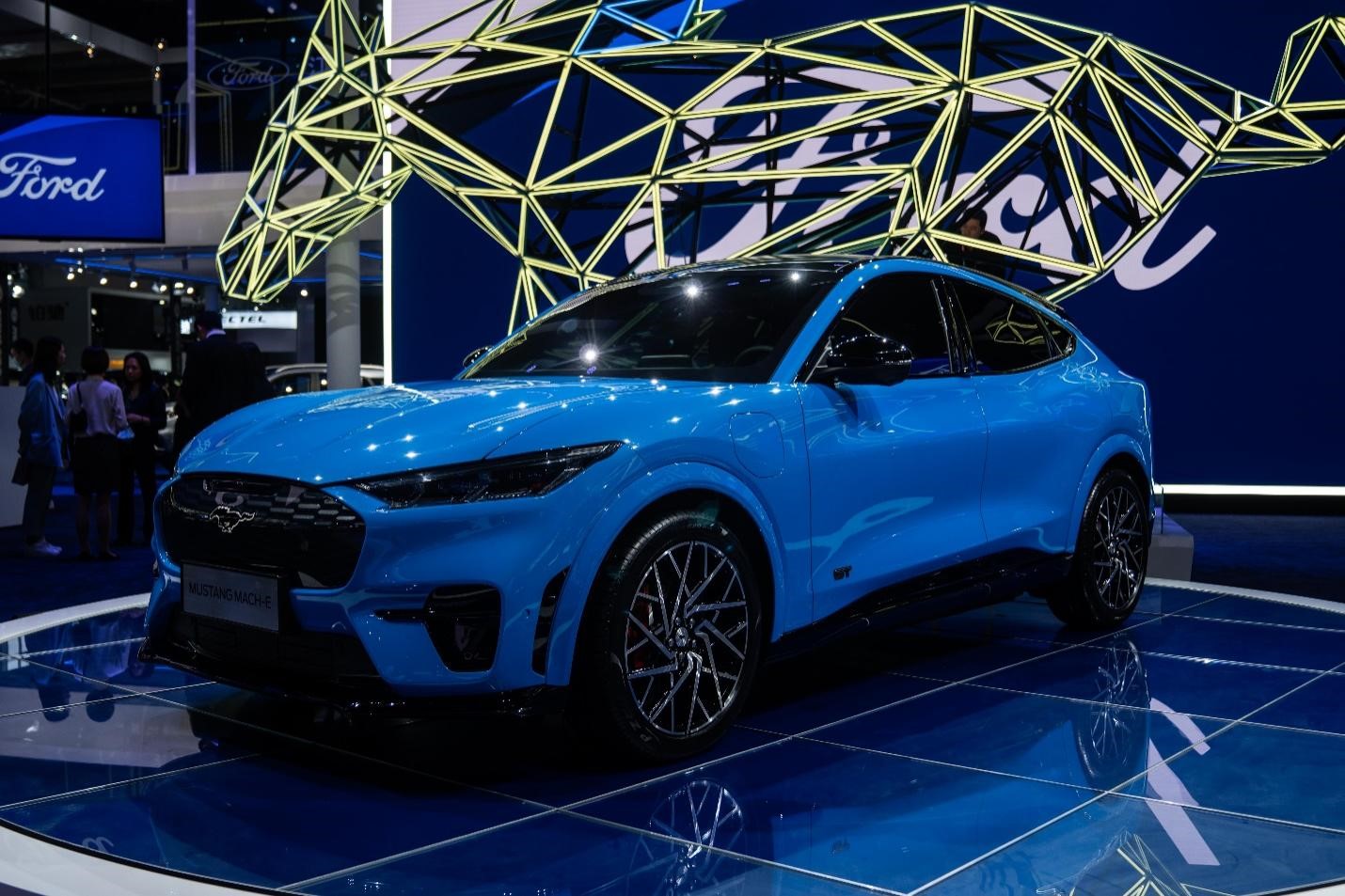
Of course, this is also related to its positioning. The Mustang Mach-E is obviously only aimed at the Tesla Model Y. This can also be seen from its wheelbase. The Mustang Mach-E has a wheelbase of 2972mm, which is 82mm longer than the Model Y’s.
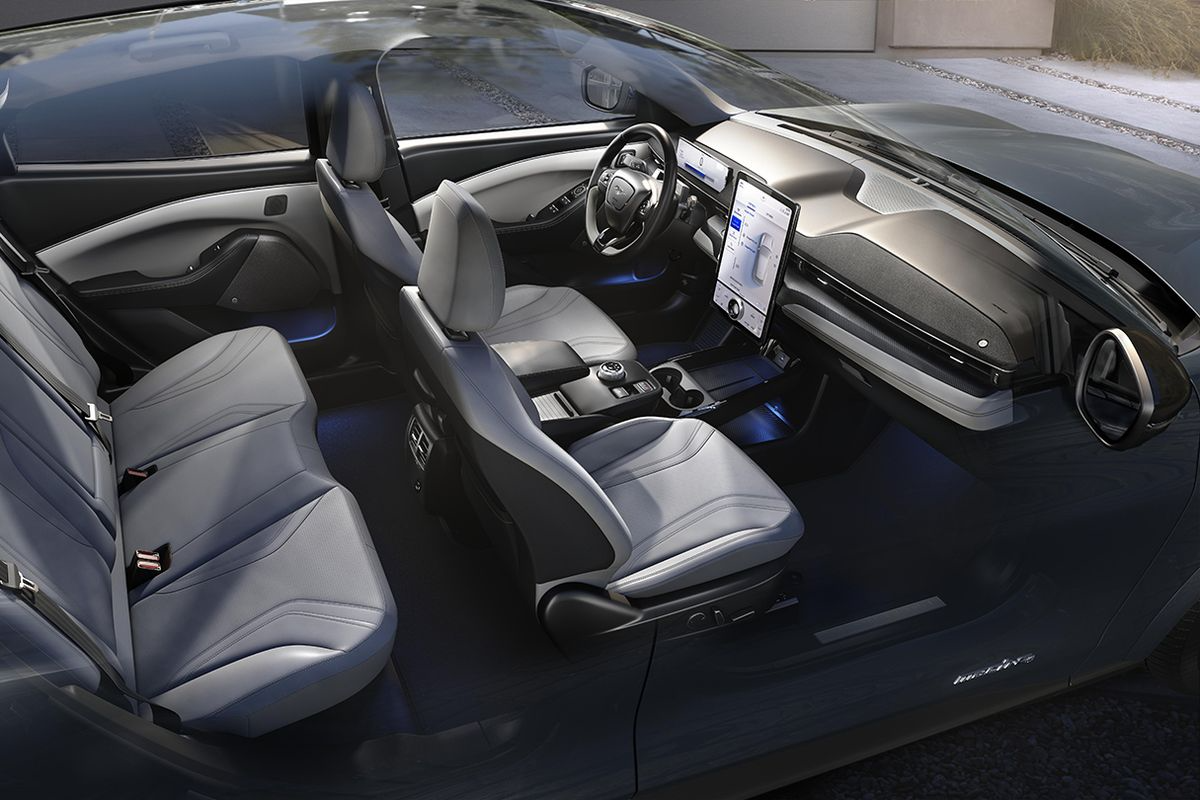
Why discuss the wheelbase when talking about a Mustang? It seems that the world has really changed.When looking at the details of this Mustang, you will find some humanistic considerations from Ford. For example, the door handle design that transforms into a Home Button button. Many electric cars have designed door handles to be hidden, which not only looks cool, but also reduces air resistance to improve endurance. However, there is a hidden danger that the hidden door handle may freeze and cannot be opened in winter. Ford’s solution is to directly replace the door handle with a button, which looks similar to Apple’s previous Home Button button. Pressing it will automatically open the door to a certain distance, which is convenient for users who need to carry items in both hands to open the door directly. In addition, a small wing-style handle is designed at the front door as a mechanical backup for frozen doors in winter.
Then there is the “frunk” that I have been longing for, because I always believe that not providing a front trunk for pure electric vehicles is “rogue”.
The 136-liter front trunk space of the Mustang Mach-E is huge, and in addition to the portable charger, it can also accommodate a pile of “home items”.
In addition to maximizing the front trunk space, Ford has also added an original partition bracket design to increase usability. In addition, the front trunk is waterproof and can be washed with water, and the design with drainage holes is similar to Ford’s previous small car Puma’s trunk, which was launched in Europe.
Combining the story between Ford and Tesla and the maturity of the new energy vehicle industry chain in China, I guess that the Mustang Mach-E is likely to be produced locally. Since the domestically produced Tesla Model Y has already lowered the price to less than 340,000 yuan, and for Ford, Mach-E’s goal is to compete head-to-head with Model Y, I estimate that the pricing will not be too far out of reach and will be within this price range.
Speaking of Ford’s electric card, in addition to responding to challenges from Silicon Valley, there are also considerations for changes in the times.
Currently, in the new energy vehicle markets in North America and China, Tesla is a “hot potato” and can be considered a successful example of breaking into the market. As the inventor of the T-model car, Ford also does not want to miss out on the next era.
Who will buy the Mustang Mach-E?
First of all, this question needs to be divided into two levels: one is gasoline car users and the other is users who have been educated by electric vehicles.
Looking at gasoline car users, there are two aspects here: Ford’s base users and other gasoline car users.For a car brand that is striving to obtain a new energy entry pass, it is not my intention to dampen their efforts, but digesting other brands’ gasoline car users is challenging. The key question is how to digest their own user base. Will they utilize the existing dealer network to quickly open up sales channels or play the “trade-in” subsidy card for their base gasoline car users? Currently, Ford has not made a move.
Unless Ford is determined to rebuild holistically from the brand to the sales network, adopting a direct selling model with a radical approach, they will not likely upend the mainstream cheese of other traditional car brands.
The target users in front of us are those educated by electric vehicles. This group of users can be further divided into two categories: those educated by smart technology and those not yet educated by smart technology. However, their common ground is the high level of stickiness towards electric cars. From a hardware perspective, whether it’s range or motor power, the Mustang Mach-E has the potential to rival the Tesla Model Y, which is enough for users who do not require high levels of smart technology.
But on the other hand, as the cost of LiDAR and various sensors decrease, electrification is just the “appetizer.” The ultimate competition in the electric vehicle race will still boil down to intelligence. This is where Ford’s Co-Pilot system for next year will come into play. After all, only by doing so can they have an opportunity to cover more user groups.
Final Thoughts
Returning to the beginning of the article, when Ford wanted to buy Ferrari for $16 million, they were ultimately outraged by the Italian’s arrogance. Whether it’s for “revenge” or “sales,” what we can see is that Ford is willing to burn much more than $16 million to win a battle.
Moreover, with news breaking out that Ford is also set to build a charging network of their own, and they have even applied for a charging station trademark “FASTOR CHARGE,” which is quite similar to Tesla’s Supercharger style.
We have reason to believe that Ford is taking a resolute step, even risking the “Mustang” name. What this means can be imagined by picturing Porsche naming its first electric car under the 911.On the day when Musk smashed the Cybertruck window glass, I believe most people were laughing out loud at this scene of a failed display, but then internet orders flooded in like snowflakes. Seeing this, I believe Ford’s smile gradually froze. Following this, the tug-of-war between Cybertruck and F150 was a public challenge to the craftsmen of Detroit. I want to add something – there is a little bit of the meaning of “young people not being respectful” here.
The last person who challenged Ford like this was Enzo Ferrari, and the result was that Ford won in 1966 at Le Mans after three years of effort, with three Ford GT40s taking the top three spots, winning this “challenge”.
Now back to the point, recently some mysterious spy shots of Chinese engineering test cars surfaced on the internet, and careful netizens compared them to the Ford’s newly released electric SUV product, the Mustang Mach-E. This pure electric product, which is now beginning to be delivered in North America and Europe, has now been spotted in China, and this also means that Ford’s “response” is here. But will the turning point of Le Mans be repeated in the era of electrification?

What can these spy shots reveal?
This suspected domestic Mustang Mach-E engineering test car caught on camera has two details that differ from the overseas version:
First, in the front face, the details of the partially exposed front grille in the disguise are different from the regular version already released in the overseas market, but consistent with the front face of the overseas GT version ; this validates the news that the entire lineup adopts the overseas GT front face.
Second, a design change at the front and rear fenders of the car’s left side, with one charging port located at each end. This change is presumably to move one of the charging methods in AC or DC charging to the rear of the car, to cater to the Chinese market’s habit of reverse parking into garages and moving the commonly used charging port backwards.
At the same time, two differences can also be seen in the interior details that were caught on camera:
One is that the central control interface is different from the overseas version, and the interface style is more similar to SYNC+ which has already been verified on several Ford models in the Chinese market.
The second is that the central armrest area has a different design, with a continuous central channel design in front of the cup holder and a cover plate design, different from the layered and hollow design of the overseas version.

In this disguised Mustang Mach-E engineering test car, we can still see how Ford has made localization changes to adapt to the demands of the Chinese consumer market.## Who is Mustang Mach-E for?
After reading the introduction, you must have guessed who the Ford Mustang Mach-E is for. As the saying goes, “It’s not about winning bread, but about dignity.” This is the prelude to the hot-headed Detroiters who bet on the Mustang name to compete with Tesla after being mocked.
Recently, Darren Palmer, the head of Ford’s electric car business, also made fun of Tesla in an interview with a certain media.
A comment from an investor at JPMorgan after test-driving the Mach-E seemed more rational: “Although we do not expect Ford to achieve sales of pure electric vehicles that can match Tesla, we do hope that investors will take this company’s competitiveness in this field seriously.”

A table was made to compare the versions currently available in the North American market with the versions of Tesla Model Y. It can be seen that on similar priced versions, hardware indicators such as range and acceleration performance are already very close. In fact, the long-range version of the Mustang Mach-E is the only non-Tesla electric vehicle that has run 300 miles under the harsh conditions of EPA cycle testing in the past period.
But speaking of the design of the Mustang Mach-E, my first impression was a bit conservative. Compared with other Mustang models, it lacks many wild elements, but fortunately, the power and muscular feeling have not disappeared.

Of course, this is related to positioning. Obviously, the Mustang Mach-E is aimed at the Tesla Model Y, which can also be seen from the wheelbase. The Mustang Mach-E has a 2972mm wheelbase, which is 82mm longer than the Model Y’s.

Why do we need to discuss the wheelbase when talking about a Mustang? It seems that the world has really changed.## Mustang Mach-E: A Look at Ford’s Consideration for Humanization
When it comes to examining the details of this Mustang, one will find that Ford has put some thought into humanization, as evidenced by the door handle design that transforms into a Home Button button. Many electric cars feature handles with a hidden design, which not only looks cool but also aims to reduce wind resistance for greater range. This design can result in a 10-20 km difference in extreme cases, however, it may pose the risk of being frozen and unopenable during winter. Ford’s solution is to replace the handle with a button that resembles Apple’s Home Button, which, when pressed, opens the door automatically for individuals carrying items in both hands. Additionally, a small wing-like handle has been designed for the front door, serving as a mechanical backup when the car door is frozen.
Another highly desirable feature is the “frunk” or front trunk, as I believe that electric cars without a frunk are simply “rogue”. The Mustang Mach-E offers a huge 136-liter storage space in the front trunk, not only for the charging cable but also for a variety of household items.
In addition to maximizing the space in the front trunk, Ford has also added original partitions to increase availability. The front trunk is also waterproof and can be washed, and it has water drainage holes, much like the trunk of Ford’s Puma, which has been previously released in Europe.
Considering the story between Ford and Tesla and the current maturity of China’s new energy automotive industry chain, I speculate that the Mustang Mach-E will likely be manufactured domestically. With the domestic Tesla Model Y already priced at under 340,000 yuan, and the Mach-E’s target being to go head-to-head with the Model Y, I estimate that the price of the Mustang Mach-E will not be far out of reach and fall within this price range.
Ford has entered the electric vehicle market, not only in response to Silicon Valley’s challenge but also in response to the changing times. Currently, Tesla dominates the new energy vehicle market in North America and China, which is a remarkable success. Ford, as the inventor of the T-model car, does not want to miss the next era.
Who Will Buy the Mustang Mach-E?
Firstly, let’s break down this question into two levels: the first is drivers of gas-powered vehicles, and the second, those who have been educated about electric cars.
Looking at the aspect of gas-powered vehicle users, there are two factors to consider: Ford’s existing user base and other gas-powered vehicle users.For a car brand that is striving to obtain a new energy entry badge, it is not easy to win over traditional gasoline car users from other brands. Therefore, it is necessary to consider how to retain its existing user base. Will it take advantage of the existing dealer network to quickly open up sales channels, or play the “trade-in” subsidy card aimed at its base gasoline car users? At present, Ford has not yet made a move.
Unless Ford is determined to undertake a comprehensive transformation of its brand and sales network by adopting a direct-operated model, a drastic measure, it may not be possible to challenge the cheese of other traditional mainstream car brands.
The users who are currently in the forefront are those who have been educated by electric vehicles. These users can be divided into two categories: those who have been educated by intelligent technology, and those who have not.
However, their common trait is their high attachment to electric vehicles. First of all, from a hardware point of view, whether it’s battery life or motor power, the Mustang Mach-E has the basic necessity to compete with the Tesla Model Y, which is sufficient for users who do not require high intelligence requirements.
However, it should be noted that with the decrease in the cost of technologies like LiDAR and various sensors, electrification is only an “appetizer.” Ultimately, the competition in the electric vehicle arena will still depend on intelligence. This is where we need to see how Ford’s Co-Pilot performs next year. After all, this is the only way to cover a larger user group.
Conclusion
As mentioned at the beginning, when Ford wanted to buy Ferrari for $16 million, it was eventually infuriated by the arrogance of the Italians. And whether it’s for “revenge” or “sales”, we can see that Ford is willing to spend much more than $16 million to win a war.
Coupled with the news that Ford has also embarked on building its own charging network, and has even applied for the “FASTOR CHARGE” charging pile trademark, which is even similar in style to Tesla’s Supercharger.
We have every reason to believe that Ford’s move is very resolute, even to the point of risking the name of “Mustang”. What this means can be imagined by considering what it would mean for Porsche if its first electric car was named after the 911.
This article is a translation by ChatGPT of a Chinese report from 42HOW. If you have any questions about it, please email bd@42how.com.
